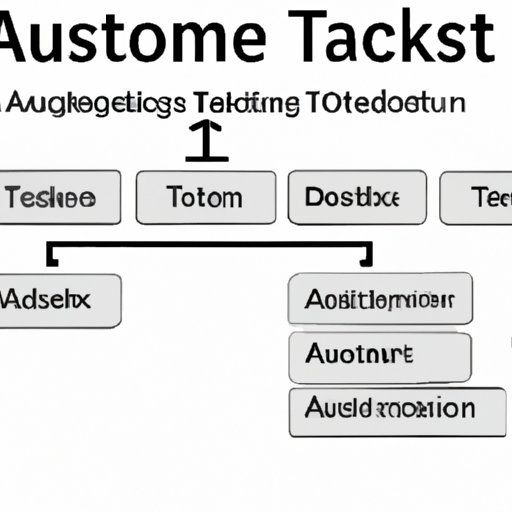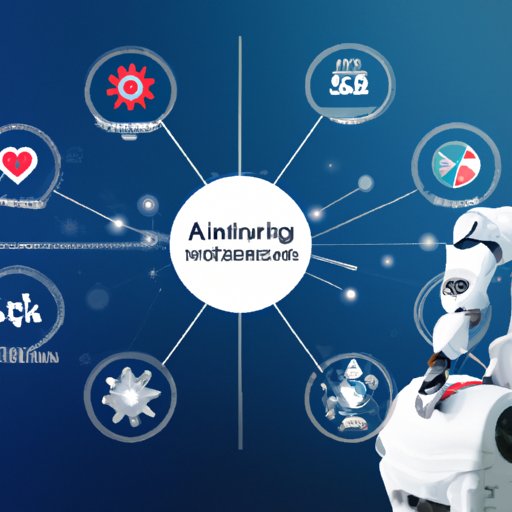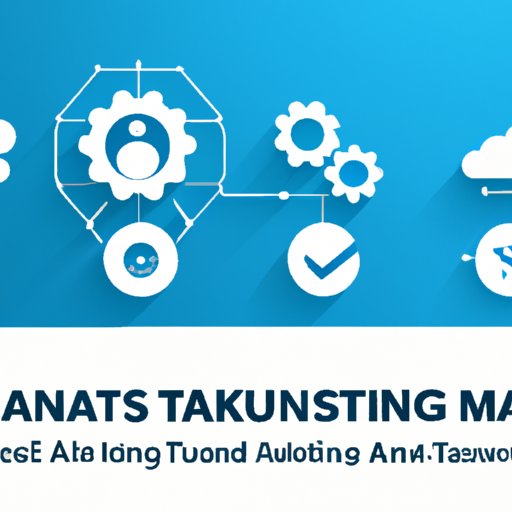Introduction
Automation is the process of using technology to perform tasks that would otherwise be completed manually. Automation has become an essential element of modern software development, as it allows developers to save time and money while increasing efficiency and accuracy. Manual testing is the process of running tests on software manually, often with the help of a manual tester. Automating manual test cases can significantly reduce the time and effort required to complete the tests, as well as increase the accuracy of the results.
In this article, we will explore how to automate manual test cases. We will look at utilizing automation scripting tools, creating an automated test framework, designing automated tests with model-based testing, leveraging AI and machine learning for automation, establishing a continuous testing environment, incorporating automation into your testing strategy, and exploring cloud-based automation solutions.
Utilizing Automation Scripting Tools
Automation scripting tools are programs that allow users to write scripts that can be used to automate manual test cases. These scripts can be used to automate repetitive tasks such as setting up test environments, running tests, and collecting data. The scripts can also be used to generate reports, send notifications, and provide feedback on test results.
Using automation scripting tools provides several benefits. By automating manual test cases, testers can save time and resources that would have been spent running the tests manually. Automation scripts can also be reused, allowing testers to quickly and easily run the same tests multiple times. Additionally, automation scripts can help ensure accuracy and consistency in test results, as they are not subject to human error.
There are several different types of automation scripting tools available. Some of the most commonly used include Selenium, Appium, and Robot Framework. Each of these tools has its own unique set of features and capabilities, and can be used to create automated scripts for different types of tests.
For example, Selenium is a popular open-source automated testing tool that can be used to create automated scripts for web applications. Appium is an open-source automation tool designed specifically for mobile applications, and Robot Framework is a keyword-driven automation tool that can be used to create automated tests for desktop, web, and mobile applications.

Creating an Automated Test Framework
Creating an automated test framework is an important step in automating manual test cases. An automated test framework is a collection of tools, components, and processes that allow testers to create, execute, and maintain automated tests. A successful automated test framework should include components such as a test library, test harness, test runner, and reporting system.
The advantages of creating an automated test framework include increased speed and efficiency, improved accuracy and consistency of results, and reduced costs associated with manual testing. Additionally, an automated test framework can make it easier to add new tests and update existing tests, as the framework can be configured to automatically detect changes in the application under test.
When creating an automated test framework, there are several strategies that can be used to ensure success. It is important to define clear goals and objectives for the framework, as well as identify the components that will be needed to achieve those goals. Additionally, testers should consider the language and tools that will be used to create the framework, as well as any security or performance concerns that may arise.
Designing Automated Tests with Model-Based Testing
Model-based testing (MBT) is a technique for designing automated tests that uses models of the application under test to generate test cases. MBT is a powerful tool for automating manual test cases, as it allows testers to quickly and easily create tests that cover all of the possible scenarios for a given application. Additionally, MBT enables testers to capture and reuse knowledge about the application under test, reducing the need for manual testing.
The benefits of using MBT for automated testing include increased speed and efficiency, improved accuracy and consistency of results, and reduced costs associated with manual testing. Additionally, MBT makes it easier to add new tests and update existing tests, as the tests can be generated from the model of the application under test.
There are several examples of MBT in use today. One example is the open-source tool FitNesse, which can be used to create automated tests for web applications. Another example is the open-source tool Cucumber, which can be used to create automated tests for mobile applications. Finally, the open-source tool SpecFlow can be used to create automated tests for desktop applications.

Leveraging AI and Machine Learning for Automation
AI and machine learning are technologies that can be used to automate manual test cases. AI and machine learning algorithms can be used to analyze large amounts of data and identify patterns that can be used to optimize tests and improve accuracy. For example, AI and machine learning algorithms can be used to identify areas of the application under test that require more testing, or to predict the outcome of a test based on previous results.
The benefits of using AI and machine learning for automation include increased speed and efficiency, improved accuracy and consistency of results, and reduced costs associated with manual testing. Additionally, AI and machine learning algorithms can make it easier to add new tests and update existing tests, as the algorithms can learn from past test results and adjust accordingly.
There are several examples of AI and machine learning being used for automation. For example, the open-source tool MLTest is an AI-powered test automation platform that can be used to generate automated tests for web applications. Additionally, the open-source tool AI-Test is an AI-powered test automation platform that can be used to create automated tests for mobile applications.
Establishing a Continuous Testing Environment
Continuous testing is a process that involves continuously running tests on an application throughout its development cycle. By establishing a continuous testing environment, testers can ensure that the application is always tested against the latest version and that any issues are identified and addressed early in the development process. Additionally, a continuous testing environment can help reduce the amount of manual testing that needs to be done, as tests can be run automatically at regular intervals.
The benefits of establishing a continuous testing environment include increased speed and efficiency, improved accuracy and consistency of results, and reduced costs associated with manual testing. Additionally, a continuous testing environment can help to reduce the time to market for an application, as issues can be identified and resolved quickly.
When establishing a continuous testing environment, there are several strategies that can be used to ensure success. It is important to identify the tools and frameworks that will be used for testing, as well as establish procedures for setting up, running, and maintaining the tests. Additionally, it is important to ensure that the environment is secure and that the tests are properly monitored to ensure accuracy.

Incorporating Automation into Your Testing Strategy
Automation is an essential element of any successful testing strategy. Automating manual test cases can significantly reduce the time and effort required to complete the tests, as well as increase the accuracy of the results. Additionally, automation can make it easier to add new tests and update existing tests, as the tests can be generated from the model of the application under test.
The benefits of incorporating automation into your testing strategy include increased speed and efficiency, improved accuracy and consistency of results, and reduced costs associated with manual testing. Additionally, automation can help to improve the quality of the application under test, as any issues can be identified and resolved quickly.
When incorporating automation into your testing strategy, there are several strategies that can be used to ensure success. It is important to identify the tools and frameworks that will be used for testing, as well as define the scope of the tests that will be automated. Additionally, it is important to ensure that the tests are properly monitored to ensure accuracy and that any changes to the application under test are properly detected and handled.
Exploring Cloud-Based Automation Solutions
Cloud-based automation solutions are services that allow users to run automated tests on applications hosted in the cloud. These services provide several benefits, including increased speed and efficiency, improved accuracy and consistency of results, and reduced costs associated with manual testing. Additionally, cloud-based automation solutions can make it easier to add new tests and update existing tests, as the tests can be run automatically at regular intervals.
There are several examples of cloud-based automation solutions in use today. For example, AWS Device Farm is a cloud-based service that can be used to run automated tests on mobile applications hosted in the AWS cloud. Additionally, Sauce Labs is a cloud-based service that can be used to run automated tests on web applications hosted in the cloud.
Conclusion
In this article, we explored how to automate manual test cases. We looked at utilizing automation scripting tools, creating an automated test framework, designing automated tests with model-based testing, leveraging AI and machine learning for automation, establishing a continuous testing environment, incorporating automation into your testing strategy, and exploring cloud-based automation solutions.
By automating manual test cases, testers can save time and resources that would have been spent running the tests manually. Additionally, automation can help ensure accuracy and consistency in test results, as well as reduce the costs associated with manual testing. Ultimately, automating manual test cases can help ensure that applications are tested thoroughly and released quickly.
(Note: Is this article not meeting your expectations? Do you have knowledge or insights to share? Unlock new opportunities and expand your reach by joining our authors team. Click Registration to join us and share your expertise with our readers.)
